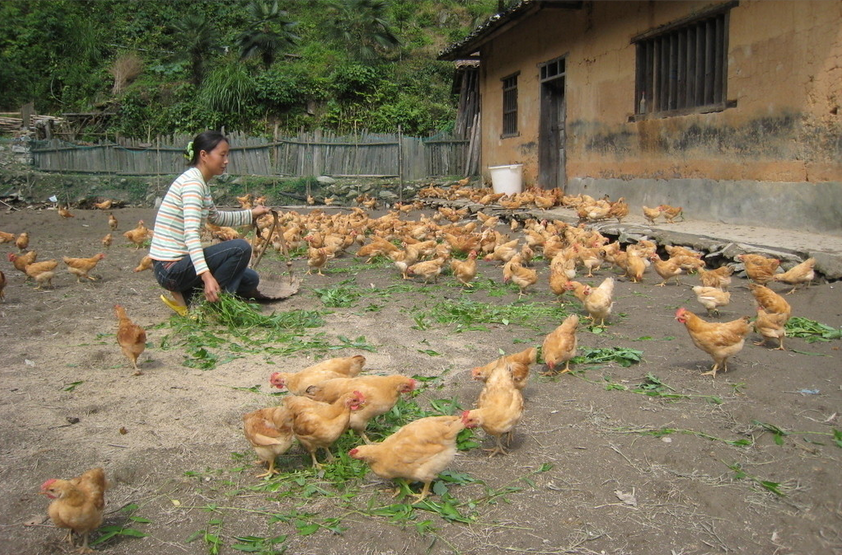In the hot summer, high temperature is a big threat to chickens, if you don’t do a good job of preventing heat stroke and improving feeding management, then egg production will be significantly reduced and mortality increased.
1.Prevent high temperature
The temperature in the chicken coop is easy to rise in summer, especially in the hot afternoon, the temperature will reach the degree of chicken uncomfortable. At this time, we can take appropriate ventilation measures, such as opening windows, installing ventilation fans and other ways to reduce the temperature in the chicken coop.
2.Keep the chicken coop dry and hygienic
a.Clean the chicken coop
Summer is hot and humid, easy to breed bacteria. Therefore, it is necessary to regularly clean up the feces, residues and other rubbish in the chicken coop to keep the chicken coop clean and hygienic.
b.Damp proof
In the rainy season, we should check the roof and walls of the chicken coop in time to prevent rainwater leakage and ensure the interior of the coop is dry.
3.Feeding management measures
a. Adjust the feed structure
When the temperature rises, due to the relatively small amount of energy required to maintain body temperature, coupled with high temperatures make chickens feel uncomfortable, so the feed intake decline, resulting in a reduction in protein intake to meet the needs of egg-laying period, must be adjusted to the feed formula in order to enable chickens to obtain a balanced nutrient composition, so that the protein intake is roughly maintained at a stable level.
There are two ways to adjust the feed formulation, the first is to reduce the energy content of the diet, reducing the energy content will increase the feed intake of chickens, thus increasing the daily protein intake. The second is to increase the protein content of the diet. When the temperature rises, feed consumption decreases, and in order to maintain the daily protein intake, the proportion of protein in the diet should be increased.
In practice, adjustments can be made according to the following principles:When the temperature exceeds the optimum temperature, the energy contained in the diet should be reduced by 1% to 2% or the protein content should be increased by about 2% for every 1℃ rise in temperature; when the temperature falls below 18℃, adjustments are made in the opposite direction. Of course, the reduced energy or increased protein content should not deviate too far from the feeding standard, generally not more than 5% to 10% of the feeding standard range.
b. To ensure adequate water intake, never cut off water.
Usually at 21 ℃, the amount of drinking water is 2 times the amount of food intake, hot summer can increase more than 4 times. Should always ensure that there is clean drinking water in the water tank or sink, and disinfect the water tank and sink at regular intervals.
c. Feed ready to use
Bacteria and other pathogenic microorganisms reproduce faster during the high temperature season, so we should pay attention to feed hygiene and feed now to prevent feed from mould and deterioration, so as to prevent chickens from getting sick and affecting egg production.
d. Add vitamin C to the feed or drinking water
Vitamin C has a good anti-heat stress effect, the general amount of additives for each tonne of feed plus 200-300 grams, drinking water per 100 kg of water plus 15-20 grams.
e. Adding 0.3% sodium bicarbonate in feed.
Because of the high temperature in summer, the amount of carbon dioxide discharged with the chicken’s respiration increases, and the concentration of bicarbonate ions in the blood decreases, resulting in a decrease in the rate of egg laying, thinning of eggshells, and an increase in the rate of breakage. Sodium bicarbonate can partially solve these problems, it has been reported that adding sodium bicarbonate can improve egg production by more than 5 percentage points, the material to egg ratio decreased by 0.2%, the breakage rate decreased by 1% to 2%, and can slow down the process of the peak of the decline of the egg laying process, the use of sodium bicarbonate dissolved in a small amount of water, and then mixing the water in the feed can be fed, but then we should consider reducing the amount of table salt.
4.Disease prevention
Serious diseases are chicken Newcastle disease, egg reduction syndrome, renal transmissible branch, chicken white diarrhoea, Escherichia coli disease, infectious laryngotracheitis and so on. Do a good job of disease prevention and control, according to the characteristics of the onset, diagnosis and treatment. In addition, when the chickens are sick, increase vitamin A, D, E, C in the feed to enhance resistance, repair mucosal damage, increase calcium and phosphorus absorption.
https://www.incubatoregg.com/ Email: Ivy@ncedward.com
Post time: Jul-12-2024





